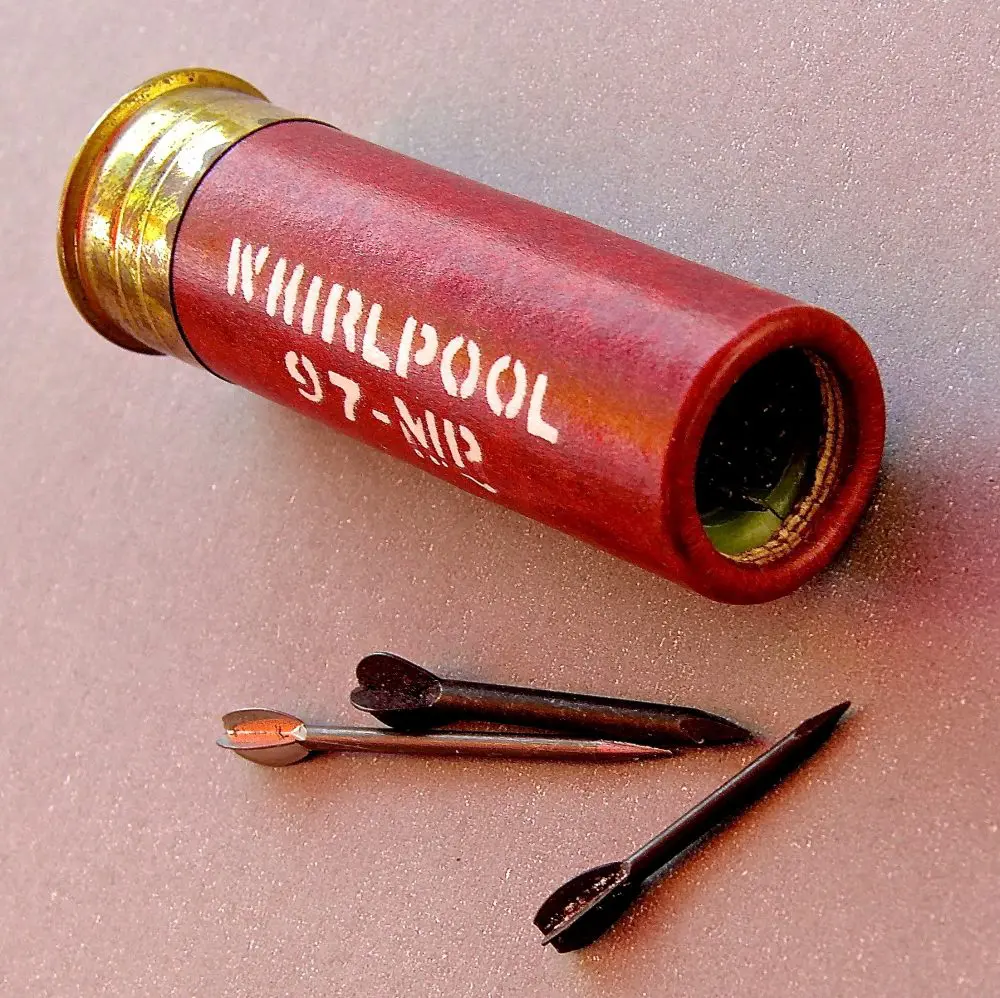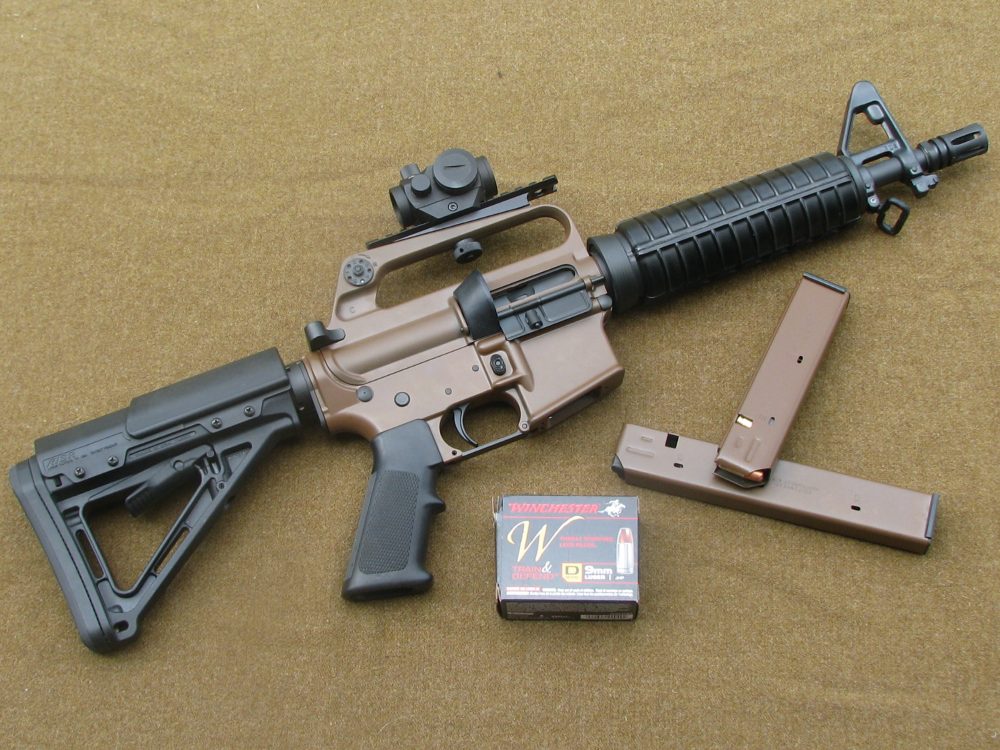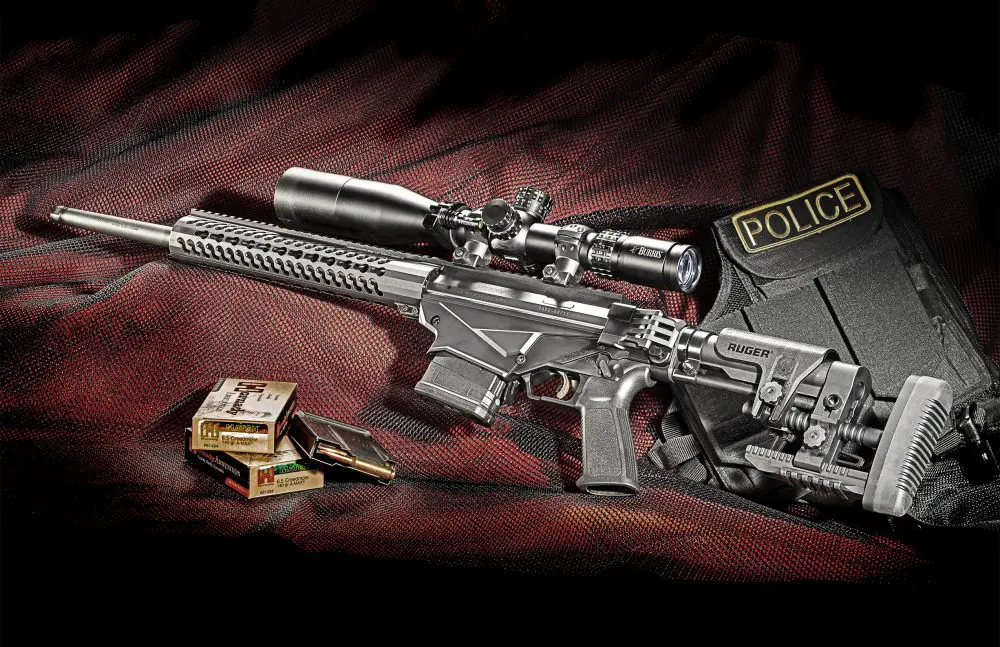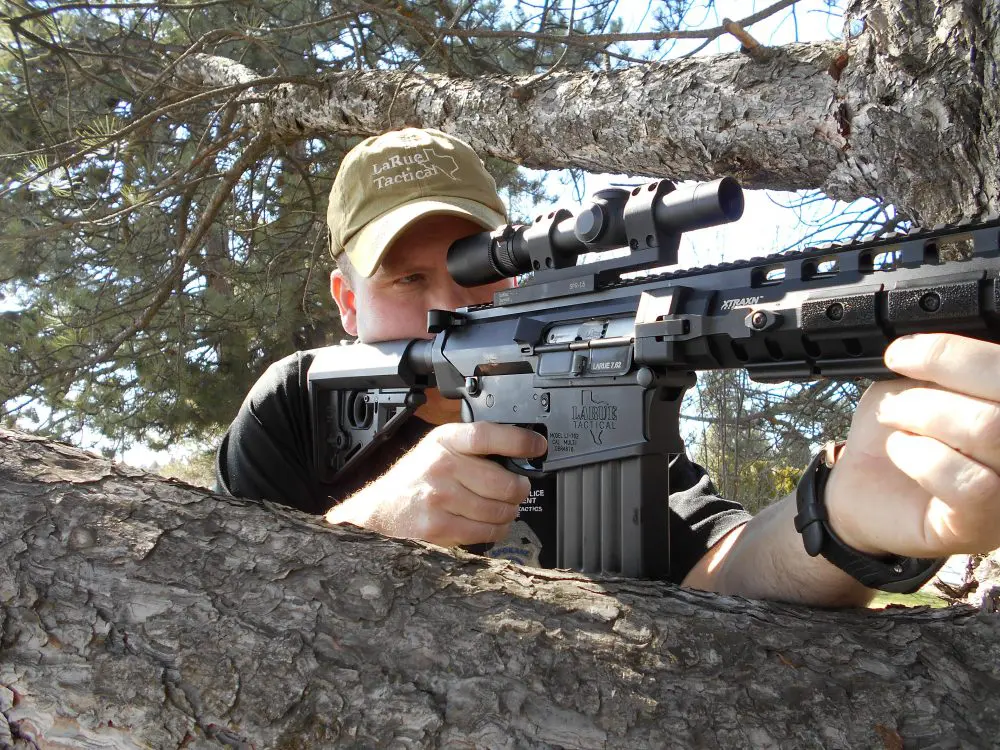I’VE always had a special affection for the Springfield M1903, perhaps because the first U.S. military rifle I ever owned was an ’03.
It was made just after World War II and in nice condition—I think it was from 1919. Today it would make a nice addition to a U.S. martial arms collection, but at the time I just used it as a shooter. The cheap ammo was corrosive surplus, so I did take care in cleaning it after use. And because I was young and stupid, I sold it—though I’ve owned others over the years.
When I had my first Springfield ’03, I thought of it as a World War I rifle, and it was, though more U.S. M1917 Enfields were issued during the Great War than ’03s. Later, as I became interested in counterinsurgency warfare, I learned that the ’03 had been the weapon of the U.S. Marines during the Banana Wars in Central America and the Caribbean and in China.
For the first years of World War II, there weren’t enough M1 Garands to arm the expanding U.S. Army and Marine Corps, so Springfields were issued. In fact, the Marines had initially declined the Garand because they liked their Springfields so much. As a result, much of the early fighting on Guadalcanal was with ’03s backed up by BARs.
A version of the Springfield M1903—the ’03A3— was simpler to produce and made in large numbers during World War II. Many shooters like the ’03A3 better because its rear sight is located farther back on the receiver and is easier to use. I admit I can normally shoot better with an ’03A3, but I still like the classic M1903.
A sniper version of the ’03A3 designated the ’03A4 was the primary U.S. sniping rifle during World War II. Mounting an M73B1 Weaver 2.2X scope, the ’03A4 wasn’t an especially good sniping rifle, but it allowed more precise shooting than the standard ’03A3 because of the optics.
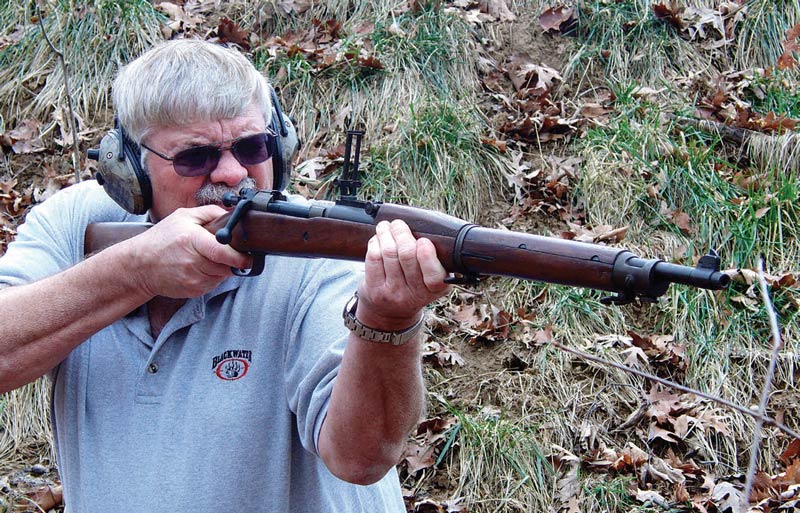
The M1903 was mostly superseded by the end of World War II, but ’03A4 sniping rifles were used during the Korean War and even the Vietnam War. Some U.S. Navy ships had ’03s in their armories into the 1950s or 1960s.
Many shooters have had a chance to purchase an ’03 or ’03A3 Springfield over the last couple of decades from the Civilian Marksmanship Program (CMP). The CMP also had non-corrosive GI ammunition available. I bought quite a bit loaded into M1 Garand clips and use it in my Garand, but also strip out rounds to slide into five-round clips for the ’03.
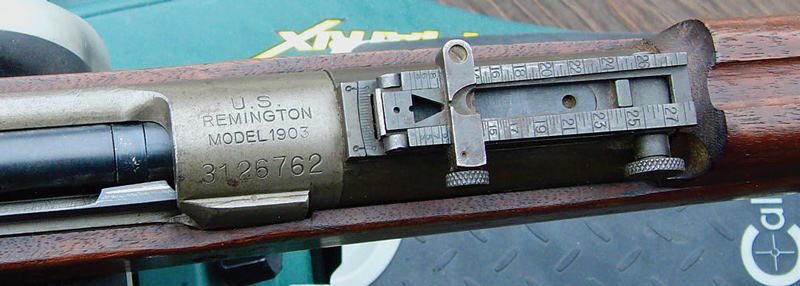
Speaking of Garand and Springfield clips, during World War II cartridge belts worn by GIs were designed with pockets that could hold either two five-round ’03 clips or one Garand clip. Since the typical belt had 10 pockets, that meant 80 rounds for the Garand or 100 rounds for the Springfield. The ammo was interchangeable but the clips weren’t.
Early in World War II before a grenade launcher was developed for the Garand, rifle grenadiers would be armed with the ’03 and often had to strip rounds from Garand clips for their ’03s. Likewise, snipers armed with the ’03A4 often stripped rounds from Garand clips as well, but they usually carried rounds in their pockets to single load. Good snipers often tested various lots of .30-06 ammo and picked the most accurate.
Many shooters firing an ’03 for the first time don’t realize that the rifle and stripper clip were designed so the soldier did not have to remove the stripper clip after pushing the rounds into the magazine. Just running the bolt forward pushes the stripper clip out. This feature was designed to speed a combat reload.

The Springfield M1903 was adopted as a replacement for the M1898 Krag Rifle, which had been outclassed by the Spanish Mauser during the Spanish-American War. From the beginning, one of its outstanding characteristics was its accuracy. During World War I, the Germans, as well as U.S. allies, were amazed at the distance at which U.S. Army and Marine riflemen could effectively engage the enemy with their M1903s. The ’03 developed an excellent reputation in national and international matches as well.
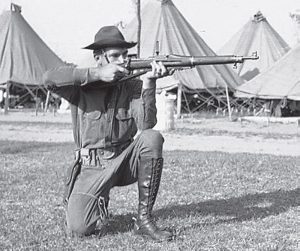
Sporterized M1903s became very popular big-game rifles between the wars and after World War II when many ’03s became available. I owned at least one sporterized ’03 many years ago. It was a very good rifle, but now that I’ve developed an appreciation for the military ’03s, I’ve become a purist and like the standard-issue rifles.
One feature of the ’03 I’ve always found interesting is the magazine cutoff, which allowed the ’03 to be operated as a single shot, with rounds in the magazine held in reserve. When the magazine cutoff was in the “OFF” position, the bolt was not allowed to travel far enough to the rear to allow the follower to rise to place a cartridge in front of the bolt, so that single cartridges could be loaded while keeping the loaded magazine in reserve. However, when it was switched to the “ON” position, the Soldier or Marine had five rounds available.
Some shooters assume the magazine cutoff switch is the safety, but it is not. The safety is another lever located at the rear of the bolt. It may be flipped to the right for safe and to the left for fire. This lever is marked “safe” and “ready.”
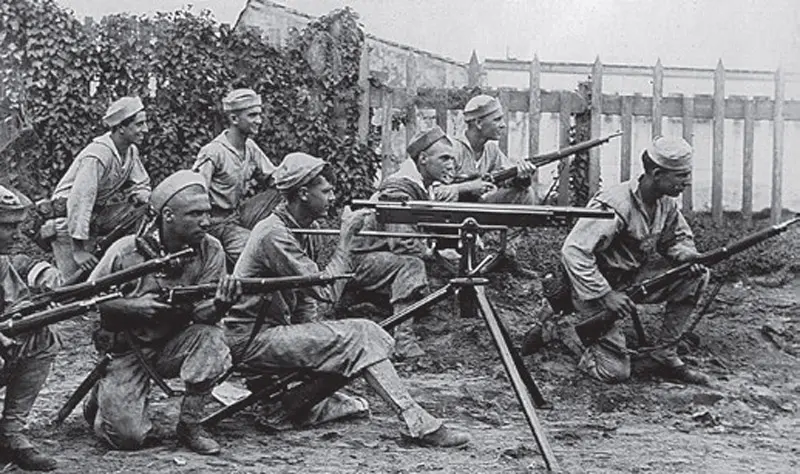
Earlier I mentioned sights: The battle sight, which is designed for quick use when the sliding “ladder” sight is in the down position, will normally shoot very high at 100 yards. In fact, many sources say that the battle sight is actually on at about 550 yards! The Marines, always concerned with marksmanship, used a thicker and higher front sight that put the battle sight zero at about 200 yards. There is an aperture on the flip-up ladder that may be used out to 200 yards or so as well.
For longer ranges, the slider may be moved up the ladder. The ladder sight has a scale marked to 2,700 yards, but in reality the aperture cannot be raised all the way to that mark.
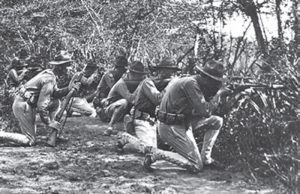
The real problem for many with the ’03 sights is that they are mounted too far forward on the receiver. As I mentioned earlier, the ’03A3 has a rear sight that is more a diopter type and mounted farther back, which is why many GIs found the ’03A3 easier to shoot and qualify with.
I like the ’03A3 sights better, too, but I find the older ’03 stock more comfortable and overall, the earlier rifle more elegant. Of course, I’m not taking the rifle into combat.
I think the ’03 or ’03A3 feels handier than the M1 Garand that replaced them. The Garand was a great weapon and helped win World War II. And I appreciate the Garand, but it always feels dead in my hands. Not so the ’03, which feels light and handy. The Springfield is about half an inch longer than the Garand but about a pound lighter. Objectively, its balance is much better.
I shoot my ’03 occasionally, but mostly I have it because I like owning classic U.S. military rifles. I have a Garand and an M1 Carbine for the same reason. Because a lot of ’03A3 Springfields and Garands have been available from the CMP over the last couple of decades, it is still possible to find them at relatively reasonable prices.
One note: 1903 Springfields made at Springfield Armory with serial numbers under 800,000 and at Rock Island Arsenal should not be shot, as there were heat-treating problems with some of these rifles. Leave these guns for collectors.
I certainly shoot my AR-15s more, but the M1903, the Garand, and the Carbine give us a chance to shoot the same guns that our fathers, grandfathers, and great grandfathers shot in the World Wars. I like the M1903 as a rifle and as a piece of history.


